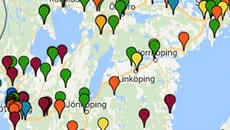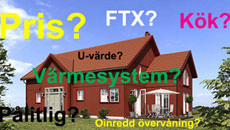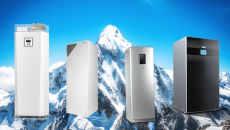54 303 läst · 394 svar
54k läst
394 svar
Hemförsäkring vid kärnkraft olycka?
Tänkte Mamman är ett troll, men ett troll som gör lite research dåM Mamma Fin skrev:
Reaktorinneslutningar behöver ventileras.Det kan uppstå övertryck och
det bildas vid normal drift i kokarreaktorer en liten mängd knallgas som måste ut.
Så det du ser är ventilation.
Barsebäck hade liknande reaktorer
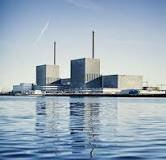
Ringhals har (hade) tydligen en kokarreaktor och tre tryckvattenreaktorer
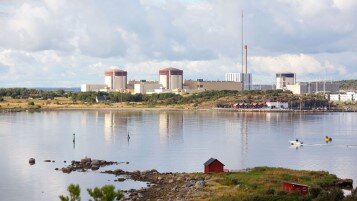
Inloggade ser högupplösta bilder
Logga in
Skapa konto
Gratis och tar endast 30 sekunder
Ventilationen är försedd med filter så inget olämpligt ska slippa ut.
https://sv.wikipedia.org/wiki/Haverifilter
Japanerna hade en designmiss så att ventilationen styrdes elektriskt.
Orsaken till det som tyvärr hände i Fukushima när knallgasen inte kunde komma ut.
Här en rapport från 2003 som förebådade detta.
https://inis.iaea.org/collection/NCLCollectionStore/_Public/35/053/35053370.pdf
Happy reading!
För att förklara skillnaden i utseende mellan BWR och PWR anlitade jag AIn.
Tyckte svaret blev rätt uttömmande.
Vill du läsa om de faktiska utsläppen från svenska reaktorer gås de igenom på wiki-sidorna.
Pressurized water reactors (PWRs) and boiling water reactors (BWRs) are two common types of nuclear reactors used for generating electricity. Both reactor types have their own cooling and ventilation systems, and the differences in their design can lead to variations in their ventilation requirements.
Boiling Water Reactors (BWRs): In a BWR, water is used as both a coolant and a neutron moderator. The heat generated by nuclear reactions in the reactor core causes the water to boil, producing steam. This steam is then directly used to drive turbines, which generate electricity. The steam generated in the reactor core can contain trace amounts of radioactive elements.
To prevent radioactive particles from being released into the environment, BWRs are equipped with a venting system that allows the controlled release of steam to the atmosphere. This venting system usually includes chimneys or stacks that are designed to disperse the released steam and any radioactive particles it might contain into the atmosphere. The height of these chimneys helps ensure that the released radioactive materials are dispersed and diluted to safe levels before reaching ground level.
Pressurized Water Reactors (PWRs): In a PWR, water is also used as a coolant, but it is kept at a high pressure to prevent it from boiling in the reactor core. This pressurized water transfers heat from the reactor core to a separate steam generator, where a secondary loop of water is heated to produce steam. This steam is then used to drive turbines and generate electricity. Unlike in a BWR, the steam that directly interacts with the reactor core in a PWR is not released to the atmosphere and remains within a closed loop.
Because PWRs keep the reactor coolant separate from the secondary loop that produces steam, there is no need for a chimney or stack to release steam from the reactor core. The steam produced in the secondary loop is the one that goes through the turbines and is eventually condensed back into water for reuse in the steam generator.
In summary, the differences in the design and operation of BWRs and PWRs lead to variations in their ventilation requirements. BWRs release steam directly from the reactor core, often containing trace amounts of radioactive materials, and use chimneys to disperse and dilute these materials in the atmosphere. PWRs, on the other hand, use a separate steam generation loop, so there is no need for chimneys to vent steam from the reactor core.
Tyckte svaret blev rätt uttömmande.
Vill du läsa om de faktiska utsläppen från svenska reaktorer gås de igenom på wiki-sidorna.
Pressurized water reactors (PWRs) and boiling water reactors (BWRs) are two common types of nuclear reactors used for generating electricity. Both reactor types have their own cooling and ventilation systems, and the differences in their design can lead to variations in their ventilation requirements.
Boiling Water Reactors (BWRs): In a BWR, water is used as both a coolant and a neutron moderator. The heat generated by nuclear reactions in the reactor core causes the water to boil, producing steam. This steam is then directly used to drive turbines, which generate electricity. The steam generated in the reactor core can contain trace amounts of radioactive elements.
To prevent radioactive particles from being released into the environment, BWRs are equipped with a venting system that allows the controlled release of steam to the atmosphere. This venting system usually includes chimneys or stacks that are designed to disperse the released steam and any radioactive particles it might contain into the atmosphere. The height of these chimneys helps ensure that the released radioactive materials are dispersed and diluted to safe levels before reaching ground level.
Pressurized Water Reactors (PWRs): In a PWR, water is also used as a coolant, but it is kept at a high pressure to prevent it from boiling in the reactor core. This pressurized water transfers heat from the reactor core to a separate steam generator, where a secondary loop of water is heated to produce steam. This steam is then used to drive turbines and generate electricity. Unlike in a BWR, the steam that directly interacts with the reactor core in a PWR is not released to the atmosphere and remains within a closed loop.
Because PWRs keep the reactor coolant separate from the secondary loop that produces steam, there is no need for a chimney or stack to release steam from the reactor core. The steam produced in the secondary loop is the one that goes through the turbines and is eventually condensed back into water for reuse in the steam generator.
In summary, the differences in the design and operation of BWRs and PWRs lead to variations in their ventilation requirements. BWRs release steam directly from the reactor core, often containing trace amounts of radioactive materials, and use chimneys to disperse and dilute these materials in the atmosphere. PWRs, on the other hand, use a separate steam generation loop, so there is no need for chimneys to vent steam from the reactor core.
Medlem
· KATRINEHOLM
· 453 inlägg
De var inte riktigt en design miss. Det var ett försök att följa en korkad lagstiftning. Personerna som gjorde lagen runt kärnkraft drift, kunde tydligen inte så mycket om kärnkraft drift, så de förbjöd direkt ventilation.J Jehu skrev:
Ironiskt nog trodde de som låg bakom lagen att de skulle hindra utsläpp av radioaktivitet, resultatet var precis de motsatta.
Vill du se radioaktiva utsläpp i skorstenar kan du ta en titt på värmekraftverk, kolkraftverk och gaskraftverk.
Klicka här för att svara

